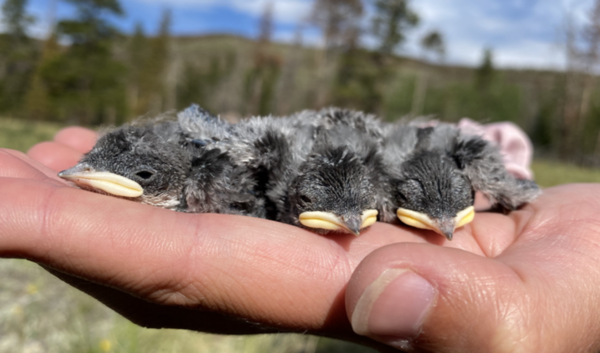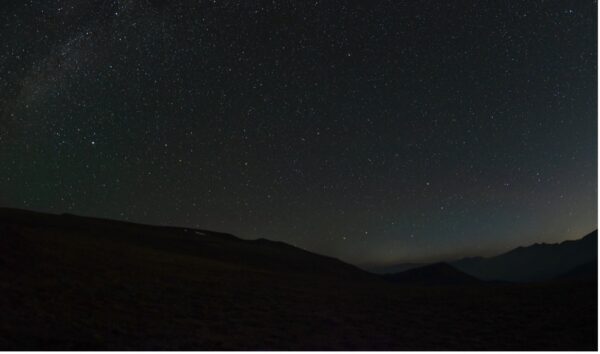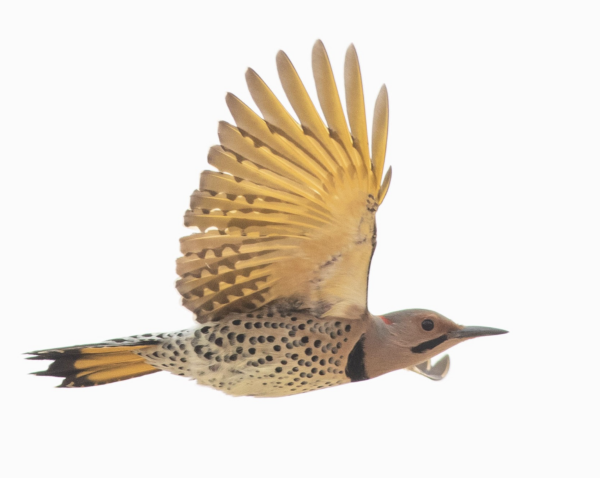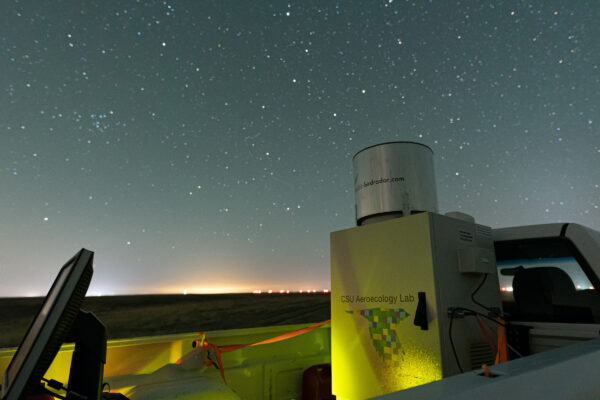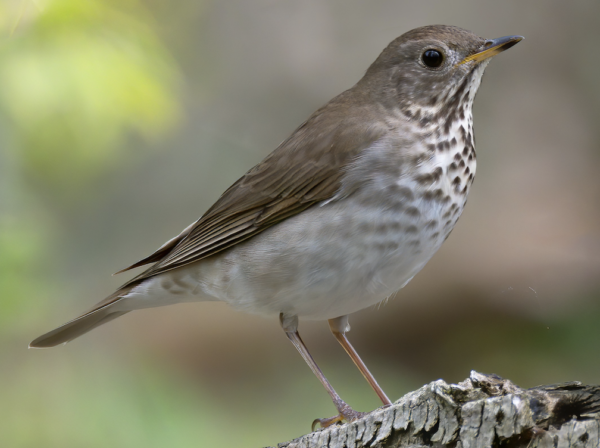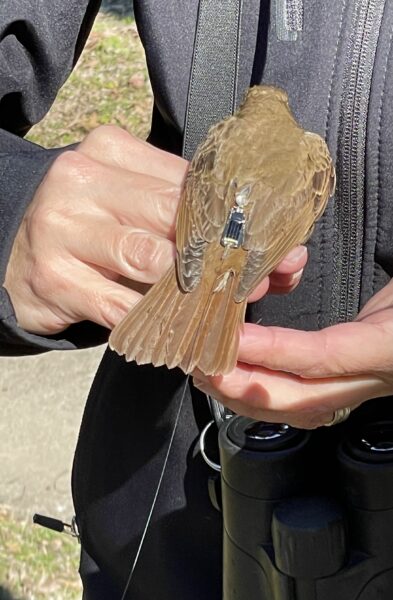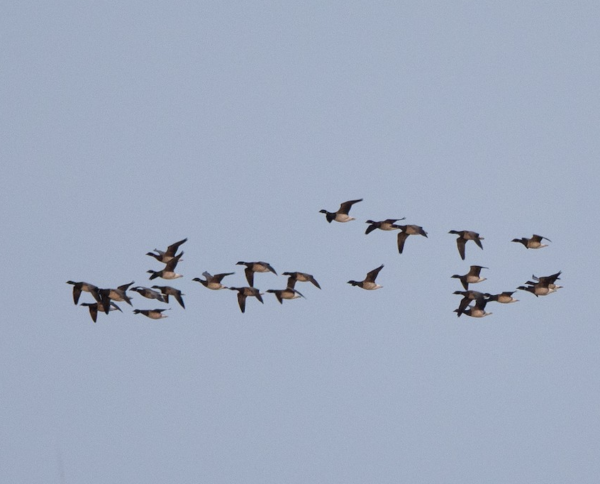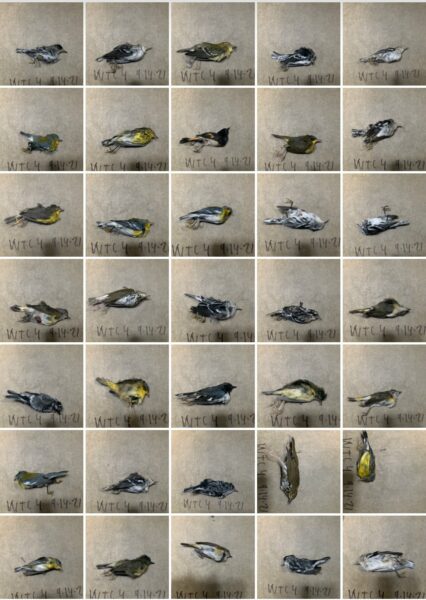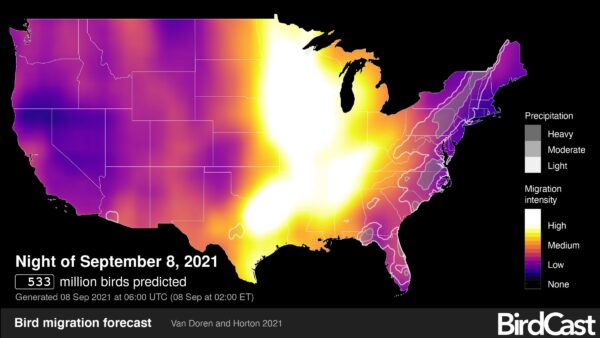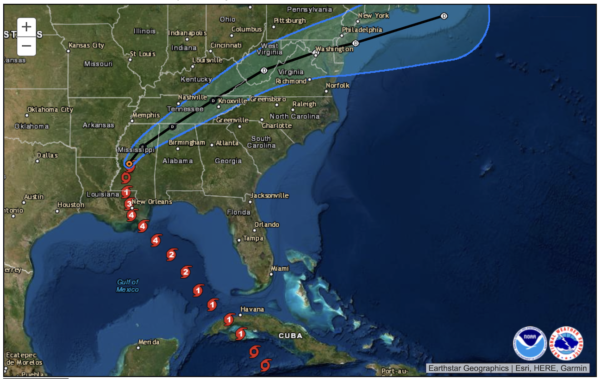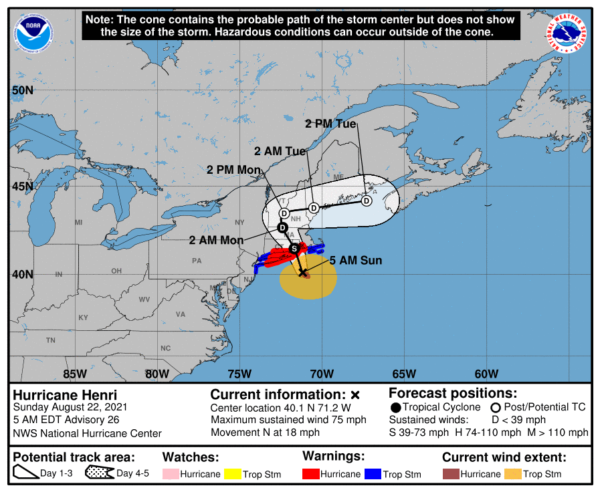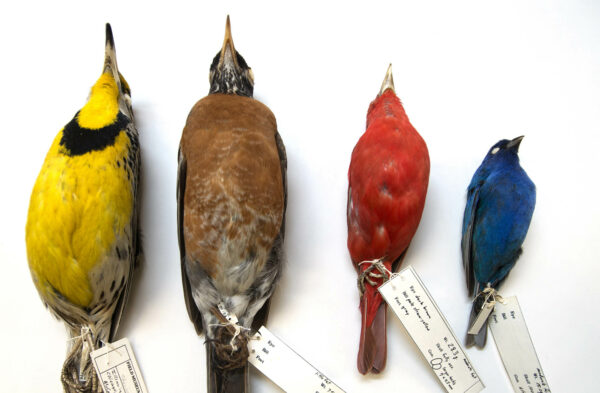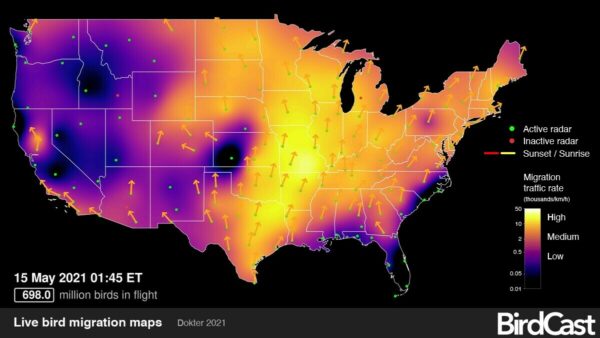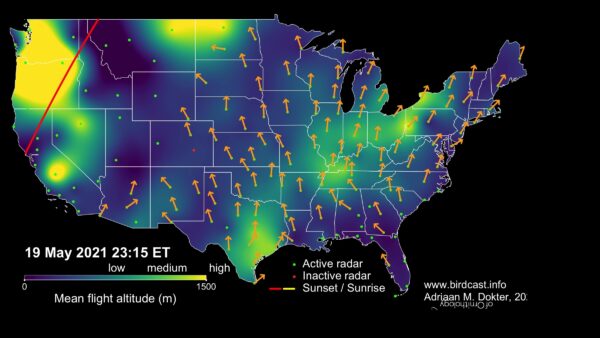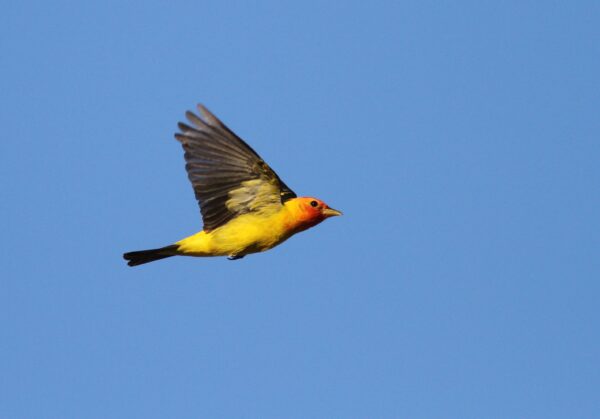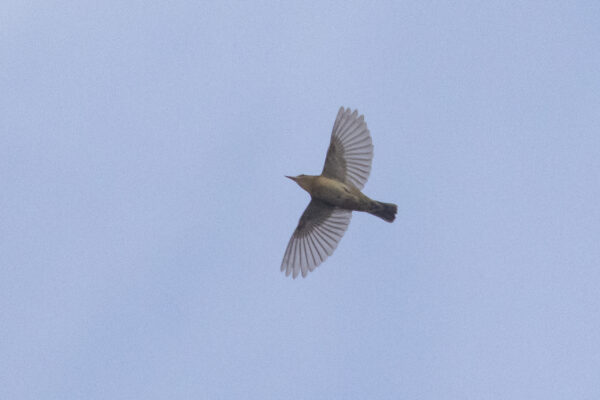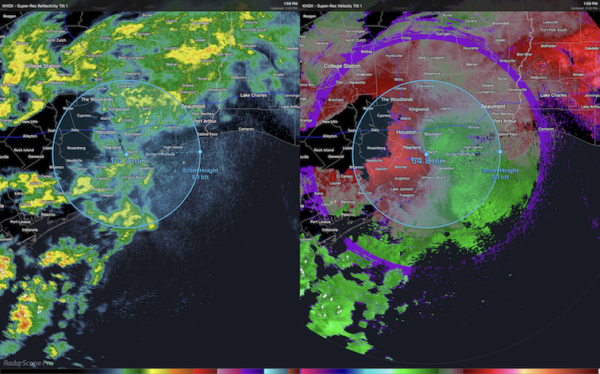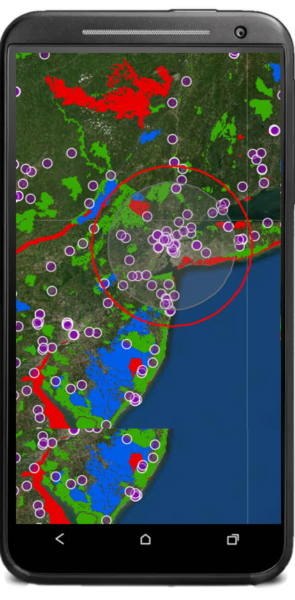Aeroecological research is more than simply studies of bird migration. Victoria Simons is studying how Tree Swallow foraging behavior relates to their usage of airspace as habitat. Read more...
To inform the public on threats from light pollution to migrating birds, Colorado State University's Dr. Kyle Horton and his collaborators are hosting a virtual seminar series this fall entitled, “Transdisciplinary perspectives on artificial-lights-at-night and achieving sustainable night skies.” Read more...
With much anticipation, the BirdCast team welcomes you to our Fall 2022 season! Our migration tools are now live, so please feel free to explore! Read more...
The BirdCast team loves a report from the field, and today we have one from Colorado - the home of our western base of operations, Colorado State University, where Dr. Kyle Horton directs the AeroEco Lab. Read more...
An interesting pattern of Gray-cheeked Thrush arrivals in the central US during April led the BirdCast team to investigate a potential explanation. We looked to the wind. Read more...
The recent release of the BirdCast Migration Dashboard inspired much excitement in a broad array of team members, collaborators, colleagues, friends, family, and followers. There are many ways to apply the information you can explore with the dashboard, but one intriguing possibility comes to us from Laura Cook in this post about tracking two Hermit Thrushes. Read more...
The new BirdCast Migration Dashboard is here, providing nocturnal bird migration data for counties and states in the contiguous US! This tool offers new capabilities to investigate birds' movements in detail and at scales that complement our existing national forecast and live migration maps. Try it out today to explore patterns of nocturnal bird migration in your area! Read more...
This weekend's change in temperature will harken the first big flocks of Brant, and numerous other species, arriving in the northeastern US. Read more...
BirdCast is deeply disturbed by the mass bird collision events that occurred earlier this week in Manhattan. Light pollution and poor flying conditions on a night of intense migration contributed to these events. There are essentials actions we can take to prevent these types of events: turning off all non-essential lights, especially during migration periods, to reduce birds' attraction to and disorientation by them, and making buildings bird friendly. See our recommendations for turning off lights below. Read more...
The BirdCast forecast model predicts just over half a billion birds to be flying during peak flight hours tonight! Turn out your lights! Go birding! Read more...
Hurricane Ida made landfall in Louisiana as a category 4 storm, and its remnants continue to move north and east through the US. Numerous seabirds entrained and displaced by this storm are occurring far inland, and our live map of these observations highlights their distributions. Read more...
On Sunday Tropical Storm/Hurricane Henri will make landfall in southern New England with dangerous storm surges, strong winds, and heavy rainfall. The storm is then slated to move north up the Connecticut River valley before departing east into the Gulf of Maine. This system will bring numerous seabirds ashore, in many coastal and inland waterbodies in and east of its path. Read more...
The BirdCast team led a study published today that uses two decades of data to show that migration magnitude, light output, and wind conditions are important predictors of collisions at a high-profile building in Chicago. This research has global implications for conservation action campaigns aimed at eliminating an important cause of bird mortality: light pollution and resulting collisions with structures. Read more...
The spring of 2021 offered many migration highlights, and here we showcase the top 5 mega-flights of this soon-to-be-in-the-books season. Read more...
During the past week, enormous numbers of birds have been migrating through the US. But birders seeking massive concentrations of birds in their favorite habitats may not have experienced the fallouts of their dreams. A new visualization depicting the altitude of migration, when viewed in conjunction with the distribution of migration traffic, highlights an explanation. Read more...
Southern California affords some excellent opportunities to see continuing diurnal migration of typically nocturnal migrants. Kicking off in Spring 2021, the Bear Divide Migration Count by the Moore Lab of Zoology at Occidental College is one of these opportunities! Read more...
For more than 50 years US radar aeroecology has largely been restricted to the lower 48 states — until now. Just out in the Proceedings of the Royal Society B, the BirdCast team publishes the first weather surveillance radar studies of Alaskan bird migration. Read more...
During the week of April 19-25, several weather events set up excellent conditions for observing visible migration, mostly of wood-warblers, including this Worm-eating Warbler, migrating along Florida’s east coast. Our colleague Jacob Drucker reports on his observations on the ground! Read more...
Trans-Gulf migrants are encountering rain as they approach the US coastline. Birders in Texas and in other areas along the Gulf of Mexico cost should make plans to visit the coast ... now. Read more...
Every year approximately 6.8 million migratory birds collide with communication towers in the United States and Canada. Non-flashing lighting is a primary factor in these collisions. Fortunately, there’s a unique opportunity for communications tower owners and birds to mitigate the hazards that such structures pose. Read more...

